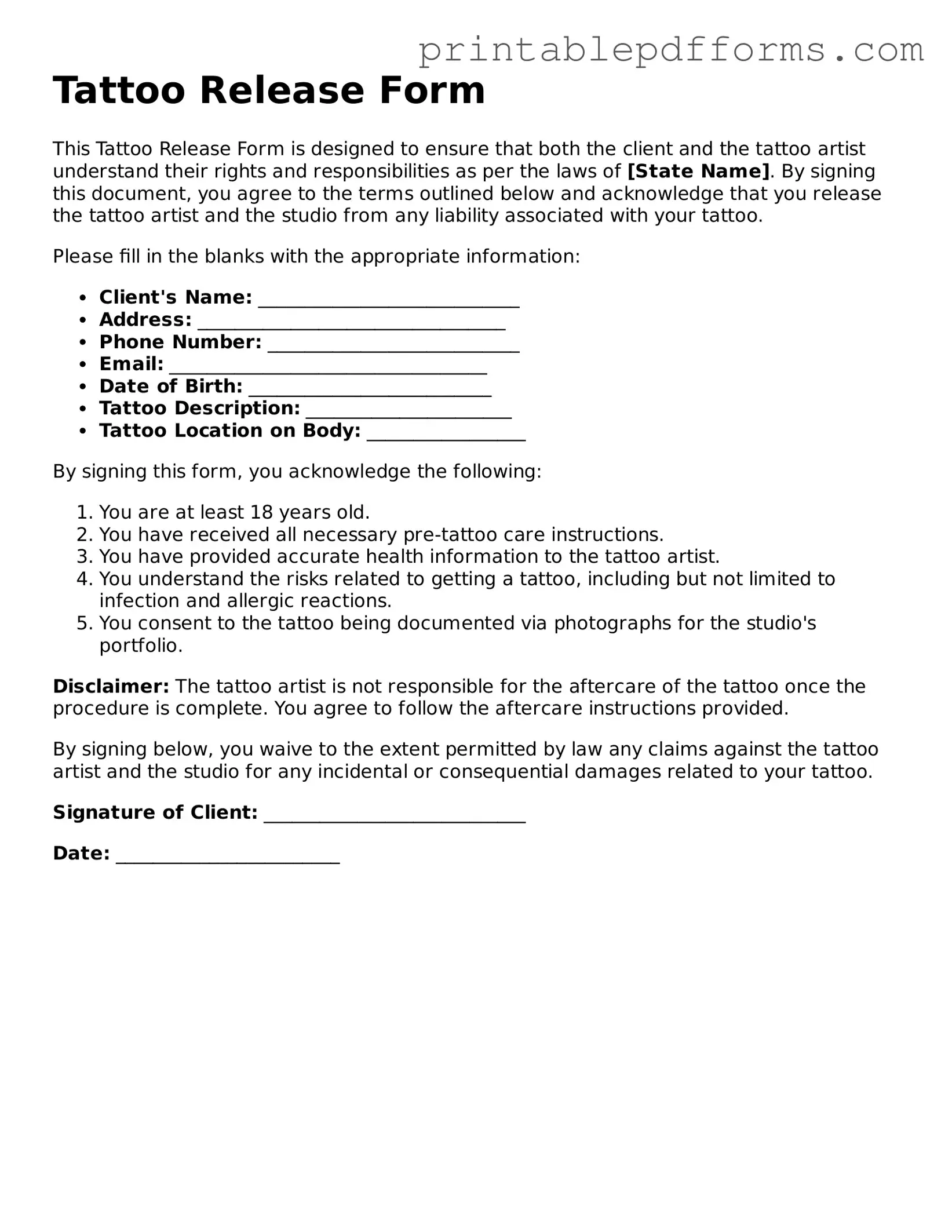Tattoo Release Form
This Tattoo Release Form is designed to ensure that both the client and the tattoo artist understand their rights and responsibilities as per the laws of [State Name]. By signing this document, you agree to the terms outlined below and acknowledge that you release the tattoo artist and the studio from any liability associated with your tattoo.
Please fill in the blanks with the appropriate information:
- Client's Name: ____________________________
- Address: _________________________________
- Phone Number: ___________________________
- Email: __________________________________
- Date of Birth: __________________________
- Tattoo Description: ______________________
- Tattoo Location on Body: _________________
By signing this form, you acknowledge the following:
- You are at least 18 years old.
- You have received all necessary pre-tattoo care instructions.
- You have provided accurate health information to the tattoo artist.
- You understand the risks related to getting a tattoo, including but not limited to infection and allergic reactions.
- You consent to the tattoo being documented via photographs for the studio's portfolio.
Disclaimer: The tattoo artist is not responsible for the aftercare of the tattoo once the procedure is complete. You agree to follow the aftercare instructions provided.
By signing below, you waive to the extent permitted by law any claims against the tattoo artist and the studio for any incidental or consequential damages related to your tattoo.
Signature of Client: ____________________________
Date: ________________________
